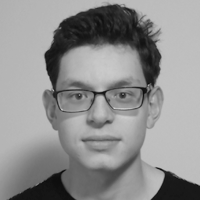
EVERYTHING PROCEDURAL | WORKSHOPS & CONFERENCE
Join us for three days of in-person, hands-on Houdini training and two day of conference talks in Breda, Netherlands. In collaboration with the Breda University of Applied Sciences, this paid conference will feature highly experienced procedural experts covering topics such as world building, game prototyping, pipeline optimization and more.
This year there are three workshops that run from Monday to Wednesday and conference talks that run on Thursday and Friday.
Workshops and Conference presentations will be recorded and posted after the event.
Workshop | Track 1
Monday April 15 - Wednesday April 17
Project Grot
Crafting a Lava Cave with Houdini and Unreal for Beginner Artists.
Workshop | Track 2
Monday April 15 - Wednesday April 17
Project Pegasus
Procedural Open World Environments with Houdini and Unreal for Intermediate Artists.
Workshop | Track 3
Monday April 15 - Wednesday April 17
Mastering Houdini
Learn Advanced techniques and workflows for working with Houdini and Unreal.
Presentations
Thursday April 18 - Friday April 19
Conference
Learn how studios are using Houdini to create procedural art for their games.
Project Grot | Track 1 | Beginner's Workshop
TUES | APRIL 16 | 9 AM - 12 PM CEST
Julian Bragagna | Cloud Imperium Games

Monday | April 15 | 9 AM - 12 PM CEST
Introduction to Houdini
Learn how to get started with Houdini. Beginning with a general overview, you will learn how to navigate the interface, place nodes, and use attributes. The focus is on using Houdini for Game Art and Development, showing frequently used geometry nodes with example use cases and an overview of the Game Development Toolset. The class extends to practical application by learning how to install Houdini Engine for Unreal Engine and utilizing HDA tools within Unreal levels. During the session, participants explore Houdini tools from the Unreal Starter Kit and get guided through the process of constructing a level directly in Unreal Engine using these tools.
EXPECTED OUTCOME | Attendees learn Houdini fundamental. At the end of the workshop, they feel comfortable to execute basic commands and are ready to dive deeper into Houdini learning content. They also learn how to install Houdini Engine for Unreal Engine and to use HDA tools in Unreal levels.
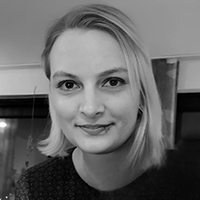
Lea Kronenberger is a 3D Environment Artist from Germany with over 7 years of experience in the games industry. She is currently working at Frictional Games as 3D Lead Artist for secret project #2. In addition to her main job, she also enjoys collaborating for other projects and is working with SideFX on their new production tech demo GROT, as well as the previous Project Titan.

Monday | April 15 | 1 PM - 5 PM CEST
Tuesday | April 16 | 9 AM - 12 PM CEST
Creating Procedural Ruins
Explore procedural modeling techniques with Julian Bragagna in this Houdini workshop crafted for beginners. Participants discover how to create a procedural ruins generator with an alien twist, diving into the world of Voronoi fracturing. They also engage in hands-on learning, gaining a deeper understanding of techniques to control diverse fracture methods and transform basic Unreal Engine blockouts into intricate and unique structures.
Throughout this session, the focus centers on the core fundamentals to create designs reminiscent of Project Grot, with little to no coding required! Attendees also learn the tricks behind crafting an organic-looking flesh cluster system, adding a captivating layer of detail to their concrete ruin. Join for an immersive experience that demystifies Houdini and procedural modeling, enhancing skills in 3D design and game development.
EXPECTED OUTCOME | Attendees gain a solid understanding of how to create their own procedural fracturing system using various Voronoi fracture methods. Additionally, they learn how to create interesting organic looking flesh clusters and how to mask areas of our blockout to be affected by these effects using vertex colors.
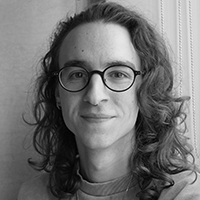
Julian Bragagna is a Technical Artist with a passion for procedural problem solving and sharing knowledge. He loves the challenge of real-time 3D, trying to find the right balance between aesthetics and technical limitations, always looking for ways to push the boundaries. Outside of his work at Cloud Imperium Games (Star Citizen, Squadron 42) he spends his free time writing articles on Houdini related topics and building procedural tools.

Tuesday | April 16 | 1 PM - 5 PM CEST
Wednesday | April 17 | 9 AM - 12 PM CEST
Building Volcanic Terrains
Learn all about how to use the terrain tools of Houdini to build a volcanic terrain. Attendees are guided through the powerful capabilities of Houdini, step by step will the procedural setup be build. Participants learn the art of creating heightfields to craft diverse landscapes, from rolling hills to jagged mountains, employing techniques that breathe life into their digital worlds. Another part of the class will be talking about adding lava into the terrain. Of the many ways to do this, you will learn how to use simulations tool to get an interesting and realistic result. Through hands-on demonstrations and insightful instruction, attendees gain invaluable skills to elevate their terrain creation and simulation power in Houdini.
EXPECTED OUTCOME | Attendees will learn about the fundamentals of making terrains in Houdini. At the end, they should have an understanding that they can make and further explore heightfields with all the different nodes used during the masterclass.
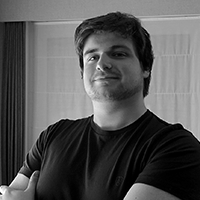
Simon Verstraete is a tech Artist that loves building procedural tools and assets. By adding more and more procedural approaches to his workflow, he is able to build 3D models with speed and flexibility. During his studies at Digital Arts and Entertainment, he taught himself how to work with Houdini. After his studies, he started working in games with a focus on procedural content generation.

Wednesday | April 17 | 1 PM - 5 PM CEST
Rock Displacement Workflows
Learn how to create a rock displacement tool in this beginner friendly workshop. Participants will gain an understanding about the basics of texture based displacement, and the requirements for creating a game ready mesh. Various solutions to the same problem are shown to gain a deeper understanding and to spark creativity within the attendees. The rock tool used in the Project Grot is broken down and explained in simple terms. This will show how the concepts discussed in the workshop can be applied to create a production ready tool for Unreal. By the end, the participants will have the prerequisite knowledge to create a rock tool of their own. There will be time to ask any questions about the topics discussed or anything Houdini related.
EXPECTED OUTCOME | Various approaches to displacement in Houdini are introduced: from triplanar displacement, to custom implementations in VEX and VOPs. The topic of mesh optimisation is also discussed. By the end, the participant will know everything they need to create a simple rock displacement tool.
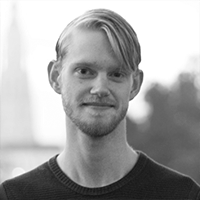
Marn Schokker is a technical artist with a focus on procedural world building in Houdini. They have enjoyed implementing mathmatical concepts in VEX for over four years. Marn currently works for Electric Square in the United Kingdom.
Project Pegasus | Track 2 | Intermediate Workshop

Monday | April 15 | 9 AM - 5 PM CEST
Procedural Landscapes
Learn how to create detailed procedural landscapes in Houdini using Houdini’s heightfield tools. Take basic primitives and create a realistic natural landscape using noise and erosion. Learn how to create Houdini Digital Assets to aid in the creation of detailed masks and colour maps. The workshop's goal is to provide an understanding of the Project Pegasus landscape workflow and give participants the confidence to build their own tools to enhance their projects.
EXPECTED OUTCOME | By the end of the workshop, attendees will have a detailed procedural landscape they can explore in Unreal. Attendees will leave with an understanding of procedural landscape workflows and how to create useful landscape tools.
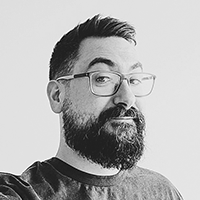
Ian Smith has over 10 years of experience working on real-time and pre-rendered projects. He is working with SideFX as Project Lead on Project Pegasus, a Houdini and Unreal 5 technical demo showcasing how Houdini can be used to build large-scale procedural environments. Ian also works as CG Supervisor at the UK animation studio NSC Creative.

Monday | April 15 | 9 AM - 5 PM CEST
Instances & Splines
Learn how to decorate the Pegasus Landscape with paths, tracks and vegetation using splines and points sent from Houdini to Unreal.
EXPECTED OUTCOME | Attendees will have learned how to use splines created in Houdini to drive Unreal Landscape Splines to efficiently spawn meshes and deform the terrain. Attendees will also have learned an efficient hierarchical approach to generate and configure foliage point clouds.
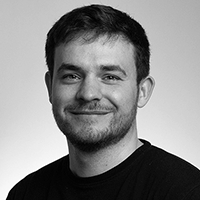
George Hulm has over a decade of experience using Unreal for Games, Broadcast, Simulation and Digital Heritage. He has developed landscape, vegetation and photogrammetry tools and workflows using Houdini, that are in use at several companies. George teaches at the école de design de nouvelle-aquitaine, and also shares his knowledge freely online via his personal Youtube channel.

Monday | April 15 | 9 AM - 5 PM CEST
Procedural Architecture
Learn different ways to approach the creation of procedural architecture. Start by describing the problem, finding reference material & defining the solution. Afterwards you will learn how to translate the resulting node networks into a digital asset.
EXPECTED OUTCOME | The goal is to have a workflow setup using Houdini to generate procedural buildings in Unreal.
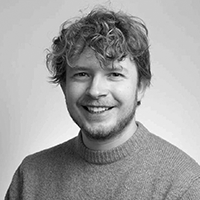
Feike Postmes is a technical artist / consultant with a focus on procedural environment creation. Having worked at Square Enix (games) and Applied Intuition (autonomous vehicles) his main area has been creating workflows for generating large worlds. Currently working with SideFX on Project Pegasus.
Mastering Houdini | Track 3 | Advanced Workshop
MON | APRIL 15 | 1 PM - 3 PM CEST
Paul Ambrosiussen | Bismuth Consultancy B.V.
MON | APRIL 15 | 3 PM - 5 PM CEST
George Hulm & Feike Postmes | Dododevs / Undini
TUES | APRIL 16 | 9 AM - 12 PM CEST
Twan de Graaf | Ubisoft
WED | APRIL 17 | 9 AM - 12 PM CEST
Erwin Heyms | Fracture Labs
WED | APRIL 17 | 1 PM - 3 PM CEST
Xray Halperin | Insomniac Games

Monday | April 15 | 9 AM - 11 AM CEST
VITRUVIUS: Road Networks
This workshop is NOT about Vitruvius the Roman architect and engineer that lived a long, long time ago. Vitruvius is the SideFX Labs set of tools that deal with architecture elements such as road networks, city layouts, and building structures. This workshop is focused on the generation of connections that drive the road networks. Knowledge of Latin is not required.
EXPECTED OUTCOME | Attendees will learn how to tackle unique challenges and solve them using procedural workflows. The workshop focuses on implementing custom algorithms to create art-directable toolkits.
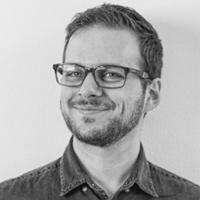
Christos Stavridis is a Technical Artist at SideFX and a member of the Labs team. When he wears his lab coat he develops tools for artists and gives fancy names to internal projects. He is an aspiring polymath and unapologetically curious about how everything works. If you want to befriend him just feed him lemon cakes.

Monday | April 15 | 11 AM - 12 PM CEST
AIAIAI - Don't You Worry (Yet)
Explore real world workflows incorporating AI techniques and their application(s) within Houdini, not only for image generation.
EXPECTED OUTCOME | Attendees will get a solid understanding of the current capabilities of (not yet terribly mainstream) AI tools.

Moritz Schwind is gonna take part in it all - Be it pixels, hardware, code or cameras. And sometimes even reassemble it. In his spare time, he likes to dabble with code and create generative artwork. He claims his early exposure to QBasic is no help at all when working in Houdini, Blender, Processing or Arduino. But it might have been what started his fascination for the boundaries of code and art. When not wreaking havoc to any intriguing devices around him, he works as a freelance Technical and Art Director. His more recent areas of interest cover the use of scientific algorithms in generative design and the application of AI in creative fields.

Monday | April 15 | 1 PM - 3 PM CEST
Building Plugins and Integrations for Houdini
Explore the process of integrating widely-used software tools with Houdini through Python programming. The focus is on providing concrete strategies for writing software integrations, aimed at content creators looking to enhance their use of Houdini for various projects. Attendees will learn how to use Python to connect and automate tasks within Houdini, improve efficiency and enable more complex creative endeavours. Take a closer look at examples of Python scripts for Houdini, tips for troubleshooting common integration challenges, and guidance on how to customize these solutions for your needs. By the end, participants will have a clear understanding of how to leverage Python to make their work in Houdini more dynamic and productive.
EXPECTED OUTCOME | Attendees will gain practical knowledge on how to integrate Houdini with Python to streamline their content creation workflows. They will learn specific strategies for developing integrations, enhancing efficiency, and enabling more creative possibilities, all while ensuring a smoother, more productive experience in digital artistry and development.
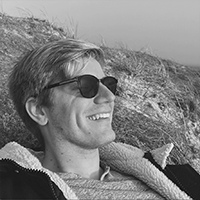
Paul Ambrosiussen is currently a Technical Artist at Bismuth Consultancy. He was the Lead of SideFX Labs prior to that. Paul finished his BASc in International Game Architecture and Design at NHTV University of Applied Sciences in Breda. Paul enjoys writing tools to support effective art-pipelines, and maintaining tool / workflow quality for the artists he is assisting. His goal is to help others create amazing things in a better, faster and more flexible way. He creates tutorials, gives live lectures, attends events, and presents custom workshops to customers.

Monday | April 15 | 3 PM - 5 PM CEST
Unreal Python States | Custom Editor Modes for Houdini Tools
Learn how the brand new scriptable tools framework in Unreal can be exploited in tandem with Houdini Engine to create well integrated tools that take full advantage of the strengths of both software packages. Learn how to stop and start Houdini sessions programmatically via blueprints, set parameters and inputs, and instantiate and cook HDAs. Discover how mouse-clicks and brush strokes in the viewport can gather information in the scene and send that information to Houdini for processing in the background. Build tools that work in real-time in Unreal Engine with full-context, and unlock the full potential of Houdini inside Unreal.
EXPECTED OUTCOME | Attendees will become more familiar with the scriptable tools framework in Unreal and how it can be used to create custom editor modes for tools created in Houdini.

Feike Postmes is a Technical Artist that currently works on advanced tools and pipelines in Houdini at Applied Intuition. Feike previously contributed to the research division at Square Enix, channelling his inner nerd to discover the wonders of procedural buildings.

George Hulm created the Undini YouTube channel, and also works at Applied Intuition as a Technical Environment Artist. George and Feike are both a part of the Project Pegasus team, and they are collaborating on a new and exciting framework for modelling plants in Houdini.

Tuesday | April 16 | 9 AM - 12 PM CEST
Building a Scalable Terrain Biome Pipeline
Walk through the process of setting up a pipeline for controlling biomes on a terrain from scratch. Biomes can help you with the design of a landscape in a high-level way. They can for example be used to control the material designation of your terrain or drive logic in other parts of your pipeline. The goal of the pipeline is to create a very scalable system, by separating out some external data and to use that to control the logic inside Houdini. The pipeline is created using mainly the VEX and Python in Houdini. Both heightfields and polygons are used to show the strength of both workflows.
EXPECTED OUTCOME | After this workshop attendees will know new ways of extending Houdini, using external data. They should feel even more familiar with VEX and Python and know how to get the most use out of heightfields and polygonal terrains.
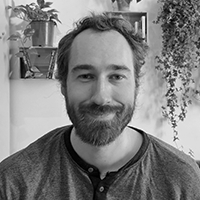
Twan de Graaf is a senior technical artist from the Netherlands and alumnus of BUas. He has worked at Ubisoft Paris for 10 years, specializing in the Houdini software package. During this time, he worked on Wildlands and Breakpoint of the Ghost Recon franchise of games.

Tuesday | April 16 | 1 PM - 5 PM CEST
Introduction to Houdini Development Kit
This workshop introduces you to the Houdini Development Kit (HDK) which will allow you to extend and customize Houdini beyond what you can normally do. Learning about HDK will also equip you with more insights into how Houdini works behind the scene. While this is a deep and extensive topic, the workshop focuses on a few fun and practical examples to get your started. The goal is to make you feel ready and confident for your own future explorations.
EXPECTED OUTCOME | The attendees will gain deeper insight into the inner workings of Houdini, learn how to develop with HDK, and try their hands at a few interesting use cases.
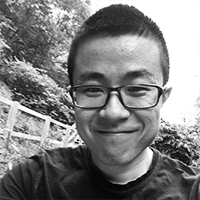
Mai Ao is the Senior Technical Lead of SideFX Labs. A graduate of Carnegie Mellon University, he received an education in computer science and art. He worked in game productions on collaborative projects with Industrial Light & Magic and Walt Disney Imagineering, responsible for Houdini pipelines, FX, shaders, and performance optimization. At SideFX, Mai developed several popular game-dev tools and is currently leading the Labs team. He is passionate about helping the community and pushing the boundaries of real-time technologies.

Wednesday | April 17 | 9 AM - 12 PM CEST
World Building with the Massive Worlds Toolkit
Learn how to build a custom tool that uses the power of the Massive Worlds Toolkit, a framework for interfacing Houdini x Unreal. Providing a new and powerful & liberating pipeline for open world building, the “Massive Worlds” toolkit empowers you to use your Houdini Digital Assets with Unreal, at a scale and at a level of integration that simply wasn’t possible before.
EXPECTED OUTCOME | Learn how to use the Massive Worlds Toolkit, a Houdini Powered Framework for Open World Building, to create your own production quality tools using a unique, flexible and non-intrusive Houdini & Unreal Pipeline.
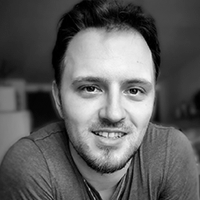
Erwin Heyms is a Houdini Teacher & Procedural Pipeline Consultant at E-Houdini Academy where he provides procedural education and R&D services to upscale digital production pipelines bringing them to new levels of efficiency.

Wednesday | April 17 | 1 PM - 3 PM CEST
Reconstructing Assets from JSON Data
JSON is a widely used data format that can be used read and write data from Houdini using Python. This masterclass will dive into a technique used in production to instance geometry to point clouds in Houdini by importing JSON data from a proprietary game engine and processing it using Python.
EXPECTED OUTCOME | Attendees will gain insight into how data can be translated between Houdini and a proprietary game engine using JSON and Python.
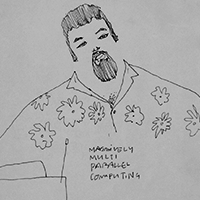
Xray Halperin is a technologist and visual effects designer whose career spans feature film, advertising, location-based entertainment, video games and interactive media. Xray is currently a Senior Technical Artist at Insomniac Games. He served as the Chair of Los Angeles ACM SIGGRAPH in 2007 and 2008. He organized a course on crowd animation for SIGGRAPH Asia in Yokohama Japan in 2009. He's been an invited lecturer at schools and conferences from Shanghai to Mumbai.

Wednesday | April 17 | 3 PM - 5 PM CEST
Procedural Modeling and Texturing: Breaking the COPs barrier
Explore a 3D game asset production pipeline made entirely within Houdini. Utilize intermediate to advanced procedural modeling and texturing methods to produce a low-res mesh with textures that can be brought into any modern game engine. Several Houdini contexts are featured with a special emphasis on Surface to Compositing Operator data conversion methods to provide increased performance and flexibility while developing a high-resolution texture result. Learn how to configure the viewport and lights to give a beautiful and nearly instant preview while developing the asset. We will also touch on Houdini network creation etiquette, organization, and methods for how to reduce our cook times.
EXPECTED OUTCOME | Participants should have a working knowledge of the modeling / texturing pipeline and the ability to create their own assets in a procedural way. They should also have a better understanding of how to traverse the Surface to Composting barrier in a more effective manner.
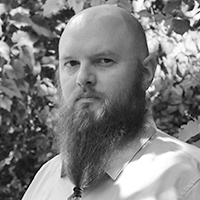
Daniel Maendel is a seasoned technical artist in the realm of game development, He possess a comprehensive blend of artistic and technical expertise whose proficiency spans a broad spectrum of game-related disciplines, including 3D Modelling, Sculpting, Texturing, Rigging, Animation, Shader development, VFX creation, Scripting, and Procedural Content Generation. He has worked for studios such as Finish line Games, Gameloft, and Blizzard on the Diablo IV Team. He is committed to a lifelong journey of seeking learning opportunities to expand and refine his skillset in the ever-evolving world of game development.
CONFERENCE PRESENTATIONS
THUR | 11:15 AM
Andy Footman & George Pennyfather | Q3D Studios ltd
THUR | 2:30 PM
Valentin Caille | Cloud Imperium Games

THURSDAY | 10:15 AM CEST
Ten Years of Tech Art for Marvel's Spider-Man
A look at the evolution of procedural content creation at Insomniac Games across multiple 'Marvel's Spider-Man' titles culminating in 'Marvel’s Spider-Man 2. Attendees will gain insight into how artists at Insomniac Games leverage procedural techniques to create compelling open worlds for epic Marvel adventures and how those techniques have evolved over the past decade.

Xray Halperin is a technologist whose career spans feature film, advertising, location-based entertainment, video games and interactive media while lecturing at schools and conferences from Shanghai to Mumbai. Xray served as the Chair of Los Angeles ACM SIGGRAPH in 2007 and 2008. Xray organized a course on crowd animation for SIGGRAPH Asia in Yokohama Japan in 2009 and spoke at Texas A&M University in 2010 and 2024. Xray was the keynote speaker for the Xi'an Animation Conference in China. Xray is currently a Senior Technical Artist at Insomniac Games developing procedural tools and techniques for titles such as "Marvel’s Spider-Man", "Marvel’s Spider-Man: Miles Morales", "Ratchet & Clank: Rift Apart", the upcoming "Marvel’s Spider-Man 2" and the upcoming "Marvel’s Wolverine". Xray is a friend to animals and an animal to friends. Xray is prone to sudden acceleration to dangerous speeds and contains a liquid core, which, if exposed due to rupture, should not be touched, inhaled, or looked at.

THURSDAY | 10:15 AM CEST
Lidar to Level:
Procedurally Generating Environments from Real-World Point Cloud Data
Q3D Studios discusses how they utilise high fidelity lidar scans to procedurally create 3D digital twin models of iconic race tracks. In the world of Formula One, driver-in-the-loop simulators play a vital role of car development, with accuracy of track model details being a high priority and a particular area of focus for the team. They will explain their usage of custom Houdini Digital Assets to extract as much real-world data from the point cloud as possible to assure accuracy and visual realism.
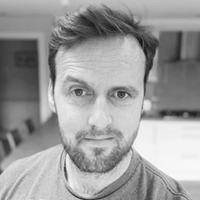
Andy Footman setup Q3D Studios over 20 years ago, having previously worked for prestigious companies like McLaren International, working on the industry’s first, cutting-edge driver-in-the-loop (DIL) simulator. 3D modelling the world's F1 tracks perfectly fit his passion for optimised real-time asset creation. Constantly streamlining the production process has been key to capitalising on advancements in lidar scanning, allowing the Q3D team to model every captured detail. Since introducing Houdini into the pipeline, they have been able to create 3D assets quicker and more accurate than ever before via bespoke custom toolsets.
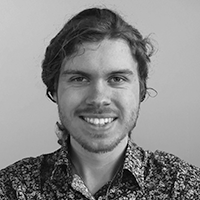
George Pennyfather is a Technical Artist for Q3D Studios, specializing in the authoring of procedural 3D tools in Houdini. His past work experiences include McLaren Automotive, Kwalee, and Associate Lecturer at the University for the Creative Arts, where he wrote and delivered the Technical Art unit for BSc Games Development. Within Q3D Studios George plays a key role in refining the team’s procedural pipelines and improving their accuracy and efficiency when reproducing digital twins of the world’s most iconic racetracks.

THURSDAY | 2:30 PM CEST
Mighty Bridge : Procedural Generation using Houdini for Star Citizen
An Houdini integration for the Star Engine and Star Citizen. In this presentation, I'll show you how we can increase the power of Houdini by using an integration based on micro services. This gives us full access to every aspects of the game editor directly from Houdini. It allows us to create a wide variety of tools, ranging in complexity, that speeds up content creation.
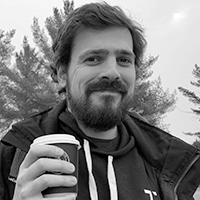
Valentin Caille is a French technical artist who has been working in the industry for more than 10 years. He previously worked at Ubisoft and Kylotonn before joining CIG. He is passionate about procedural creation and tries everyday to add more procedural workflow in game content creation.

FRIDAY | 9:45 AM CEST
Monster Factory – PDG in Diablo IV
In this Presentation, Daniel Maendel will outline how Houdini and its Procedural Dependency Graphs or PDG was used to mass produce content for Diablo IV’s Season 1 Malignant Monsters. This talk will dive into some of the production pipeline issues a typical art content team may face when producing content and how using procedural methods can greatly increase productivity with a much smaller amount of personnel. The presentation will also outline issues that may arise when performing mass automation and what steps could be taken to make the process manageable.

Daniel Maendel is a seasoned technical artist in the realm of game development, He possess a comprehensive blend of artistic and technical expertise whose proficiency spans a broad spectrum of game-related disciplines, including 3D Modelling, Sculpting, Texturing, Rigging, Animation, Shader development, VFX creation, Scripting, and Procedural Content Generation. He has worked for studios such as Finish line Games, Gameloft, and Blizzard on the Diablo IV Team. He is committed to a lifelong journey of seeking learning opportunities to expand and refine his skillset in the ever-evolving world of game development.

Student Showcase | FRIDAY | 11:45 AM CEST
Jellyfish in Houdini
Sahar Yousefi is a second-year student at Breda University of Applied Sciences, specializing in technical art and procedural creation. She will present her latest Houdini project: a tool to generate fully procedural jellyfishes, from geometry to animation and materials, based on biological research and physical simulation, with a high degree of parameter-based customization.
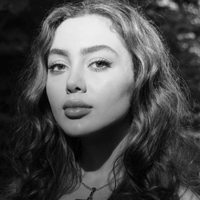

Student Showcase | FRIDAY | 11:45 AM CEST
Delaunay Patter Generation
David Heer is a third-year student at Breda University of Applied Sciences, specializing in technical art and procedural generation. David will showcase his exploration of generating animated patterns using Delaunay triangulation. From starting as a learning exercise in VEX scripting, the project demonstrates how Houdini can be used to easily create visually interesting results from simple interactions.
